
Scale Weave
403C.4 Research Studio
2024
Scale Weave
Work by Chaoying (Mavis) Zhao (MArch '24) for "Fit for the Future 2.0: 3D Printed Sustainable Building Skins", a Research Studio taught by Julia Koerner. This studio explored fashion and building skins in relationship to sustainable materials, considering the future implications of building practices. Students explored the capabilities of 3D-printing, utilizing existing structures in nature as design precedents.
Last week, Zhao’s project was awarded a 2X8 COLAB 2024 Scholarship in memoriam of Stephen Kanner, FAIA, from ACLA Architecture for Communities Los Angeles.
This project focuses on studying various types of fish scales and their adaptive mechanisms in natural environments, with the aim of applying these insights to the facade renovation of the Sparkle Factory. The research examines how the scale's shape, opening angle, size variation, density, and attachment to curved surfaces influence its protective properties, particularly in wind capture and radiation shielding, when used as a building facade. Additionally, the integration of advanced 3D printing technologies and materials ensures that the facade not only meets performance standards but also features an aesthetically appealing diagonal arrangement, rhythmic repetition, and metallic, multi-colored glazing—bringing new life to the old structure.
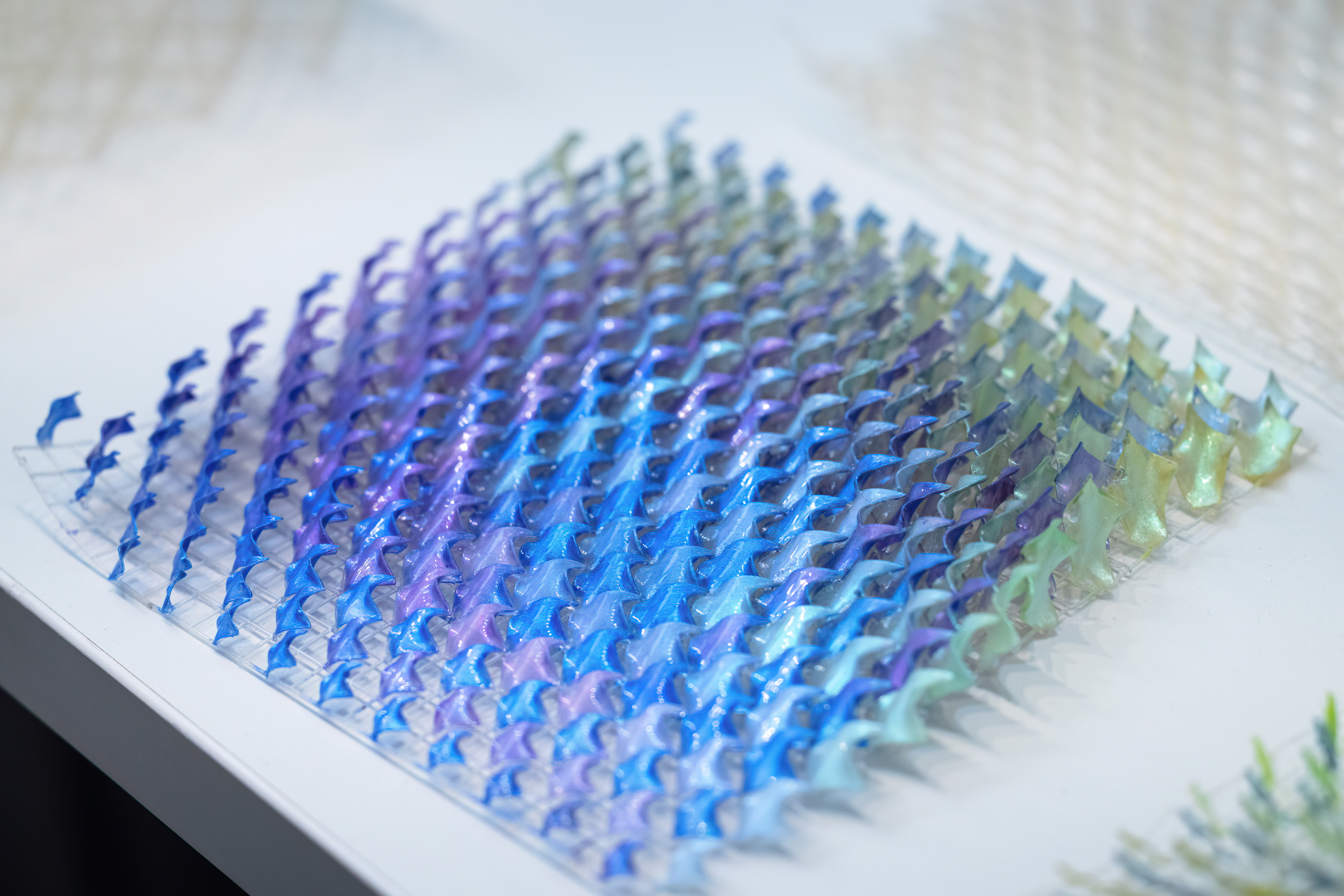
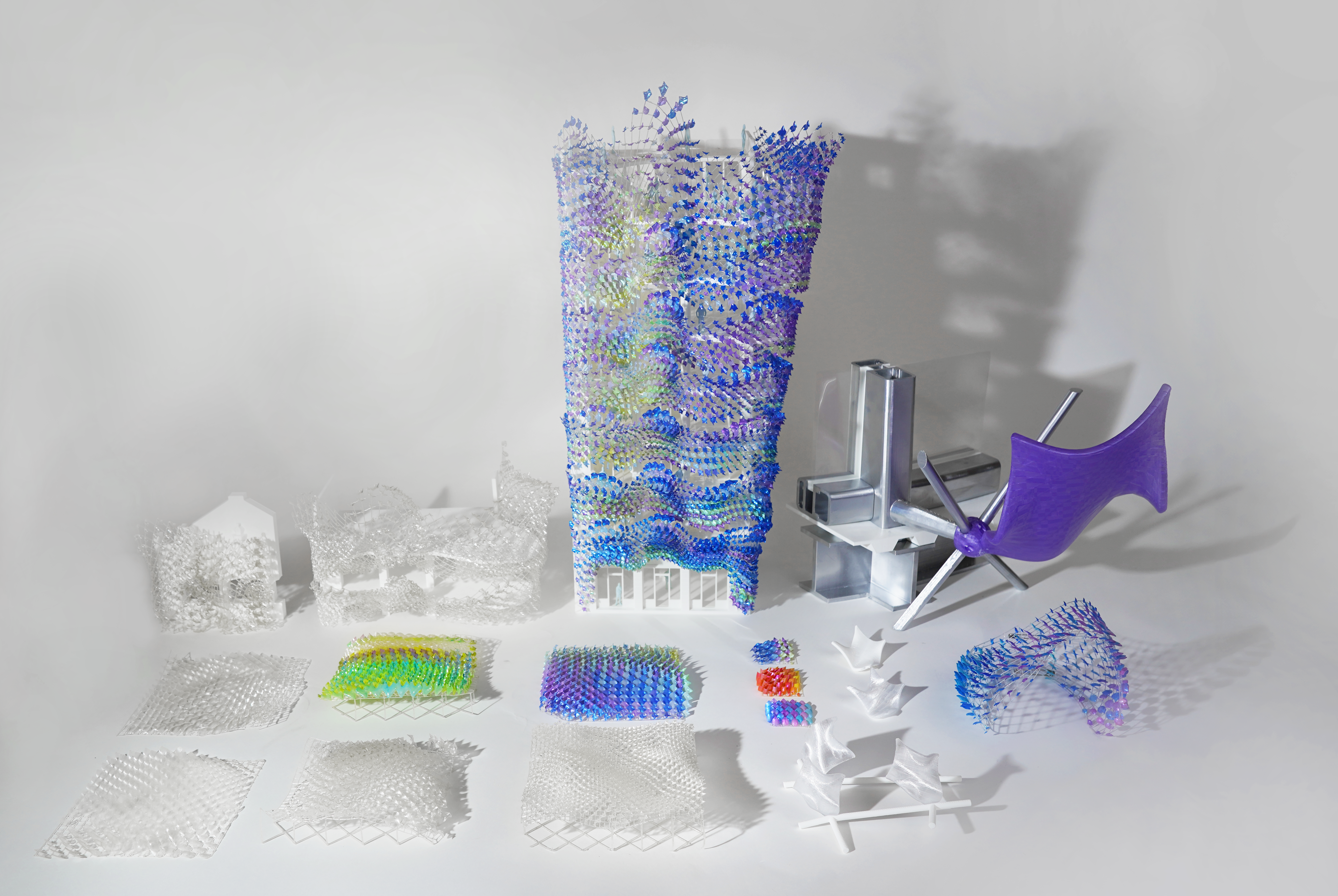
Project Statement:
Fish scales are small, hard plates embedded in the skin of most jawed fishes. Serving as a protective armor, these scales enhance camouflage through reflective and color properties and may offer hydrodynamic benefits as well. There are four main types of fish scales: cycloid, ctenoid, ganoid, and placoid, each possessing unique characteristics tailored to specific environments and life strategies.

This project focuses on studying different types of fish scales and their mechanism to adapt to the natural environment, so as to reflect in the facade renovation of Sparkle Factory. The impact of scales’ shape, opening angle, size variety, density, and the curvature of its attached curved surface on its protective properties is explored to understand its role in wind capture and radiation protection as a building facade. At the same time, its aesthetically pleasing diagonal arrangement and rhythm created by repetition, and metallic and multi-color glazing also provide new vitality to old buildings.


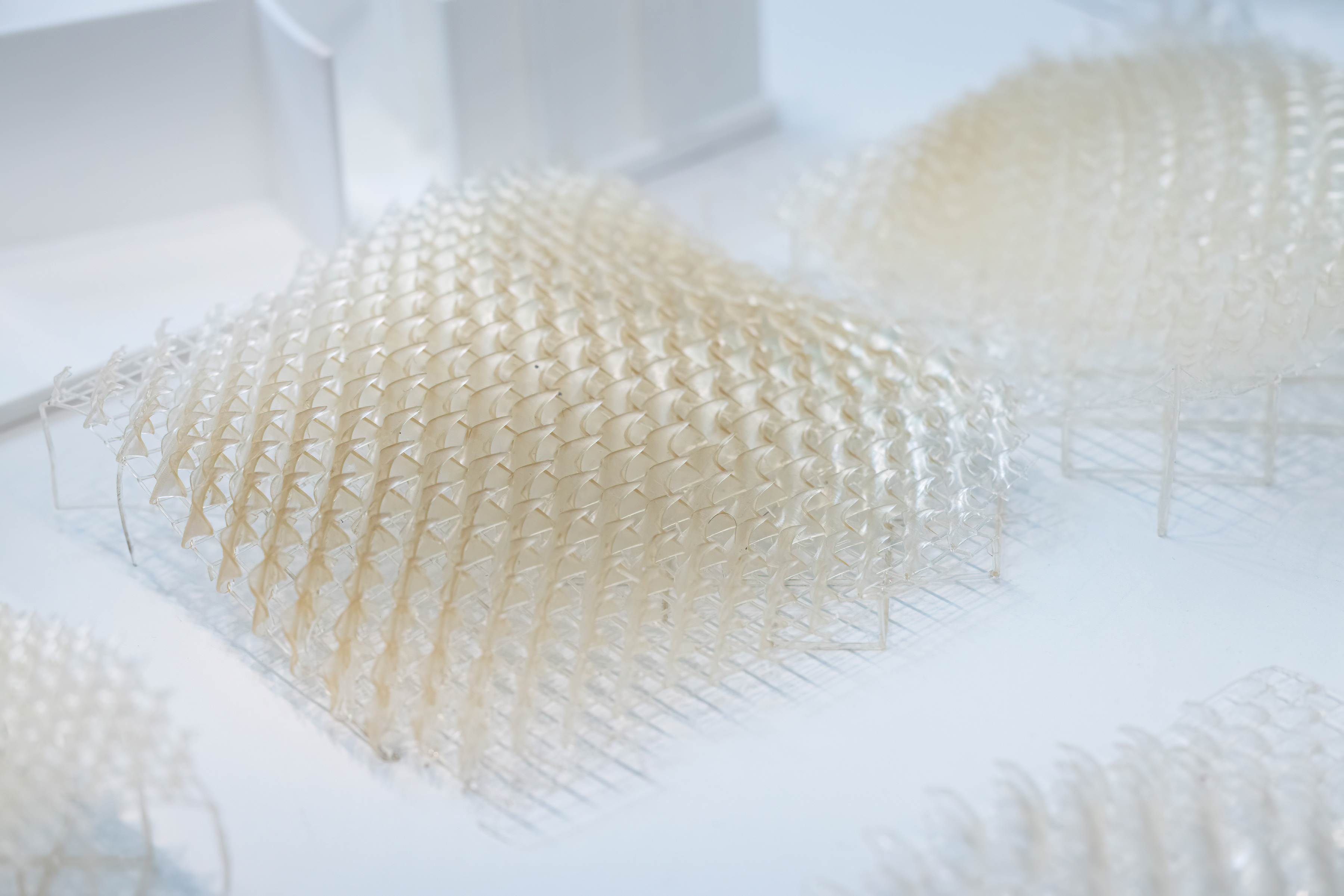
A face mask prototype was used as a preliminary design test to evaluate its thermal capabilities, drawing inspiration from the structural and protective properties of fish scales. By mimicking the interlocking mechanisms and pocketed arrangements found in scales, the mask’s design created small air pockets that enhanced insulation and airflow management. Computational Fluid Dynamics (CFD) simulations were employed to assess how variations in the density, curvature, and angulation of the scale-like components impacted heat retention and dissipation. Results indicated that denser configurations effectively blocked heat transfer, while less dense areas allowed controlled airflow, striking a balance between thermal protection and breathability. This approach demonstrates how bio-inspired design principles can be applied to wearable systems to optimize performance under varying environmental conditions.
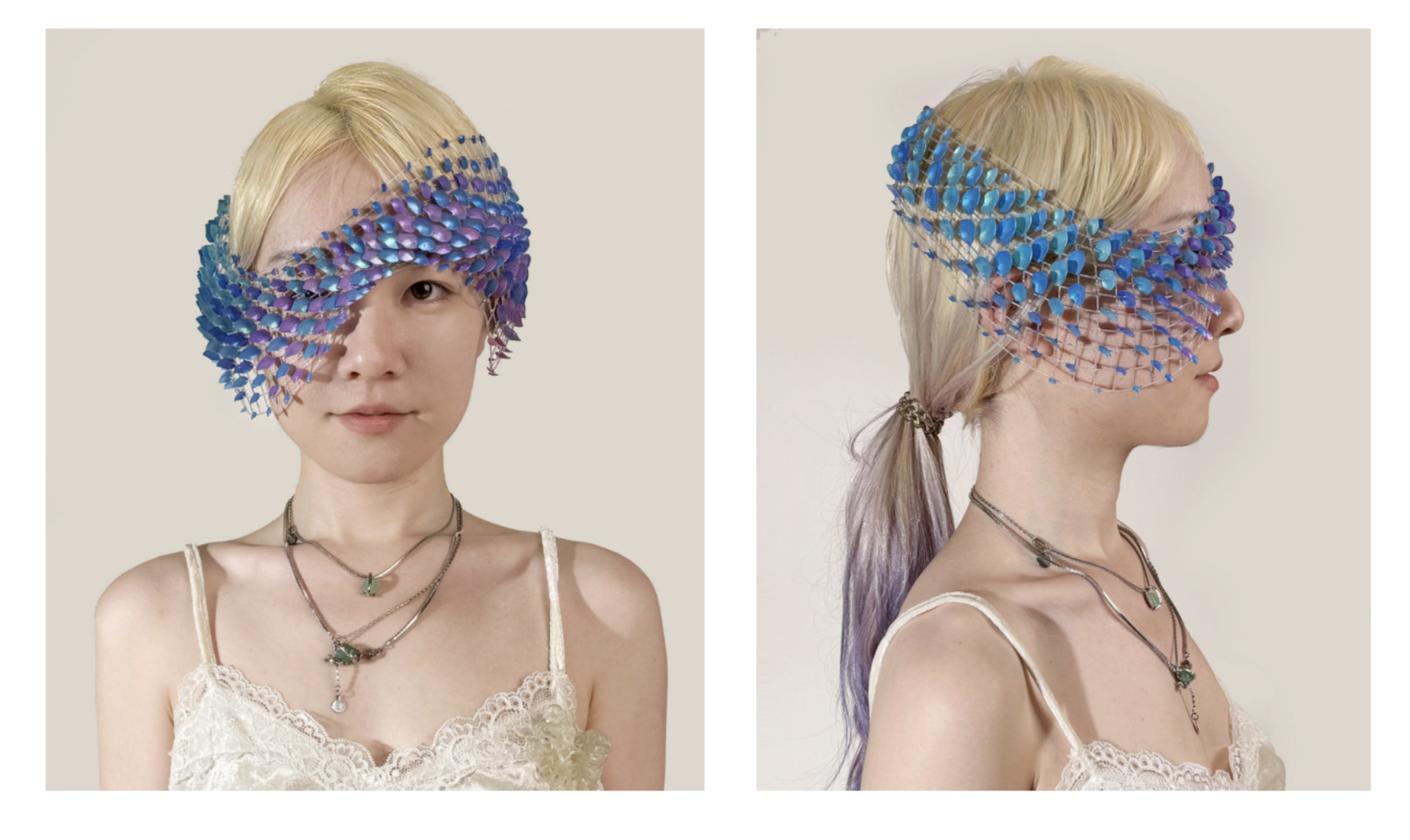

The intricate design and arrangement of fish scales inspire a new approach to building facades, combining metallic and multicolored glazing to breathe new life into old structures. The protective properties of scales, influenced by their shape, size, density, and curvature, are leveraged to enhance the building’s performance against environmental factors.Additionally, the aesthetically pleasing diagonal arrangement and rhythm of the scales contribute to the building’s visual appeal.
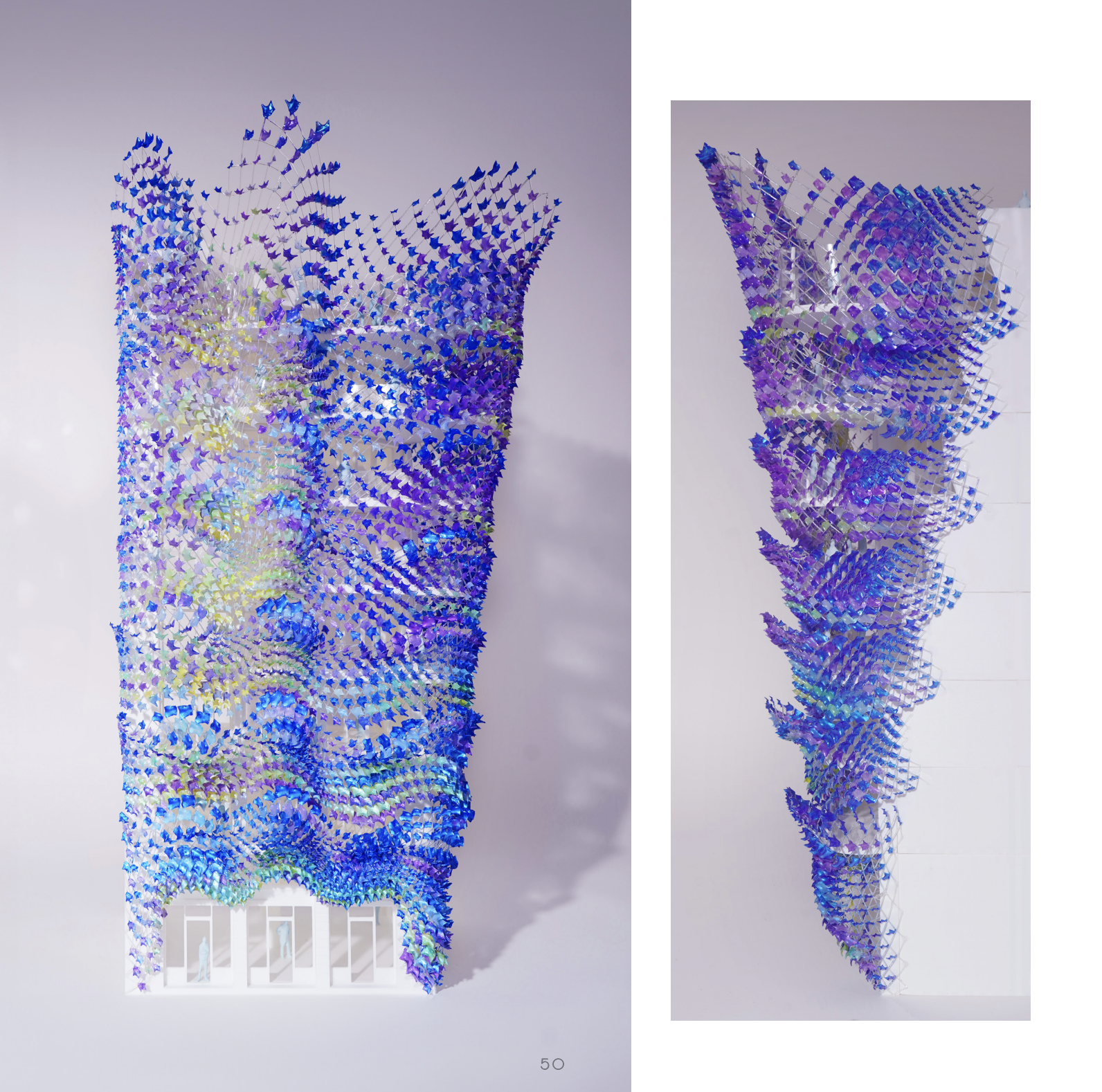
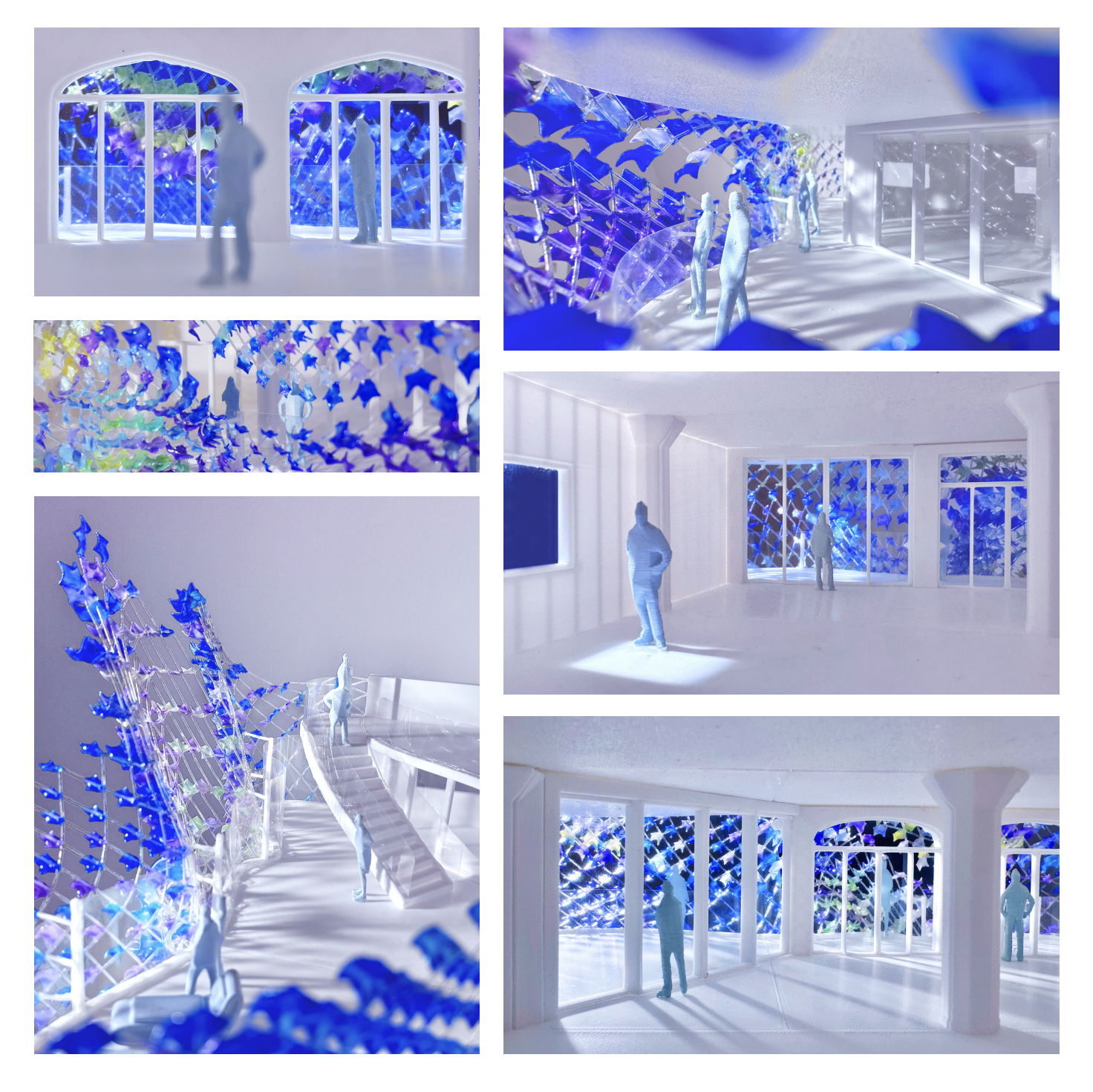





Fit for the Future 2.0: 3D Printed Sustainable Building Skins
This year-long research studio in its second cycle, will investigate the relationship of fashion and building skins, and research how buildings of the future can have skins that are performative and are 3D-printed with innovative sustainable materials. Across the world, temperature extremities are rising into previously unimagined realms and summers are developing to record setting heat. Extreme heat affects health and wellbeing and it affects how we occupy and use buildings. Climate change is experienced across the world in changing weather conditions such as more frequent fires, droughts, storms and flash floods. Ground-up construction will diminish in urban environments and increasingly be replaced with retrofits. Within the studio we will rethink how to design retrofits of existing buildings, providing them a new wearable skin, and one that responds to extreme climatic conditions.
Surge in use of 3D printers in the construction industry for making precise final products, developing prototypes while lowering the production and materials cost and increase in adoption of green buildings and structure drive the growth of the global 3D printing construction market. The market across North America held the largest share in 2021, accounting for nearly two-fifths of the market. The path towards a sustainable future requires a transition from the current linear, extractive, toxic construction practices, towards circular, bio-based, renewable materials and methods. This shift has the potential to dramatically reduce the natural resource needs and carbon footprint of growing cities and infrastructure, and is critical to deliver on the Glasgow Climate Pact.


Related Faculty |
Julia Koerner |



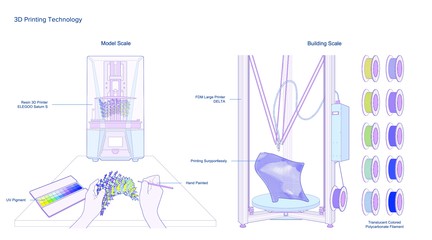

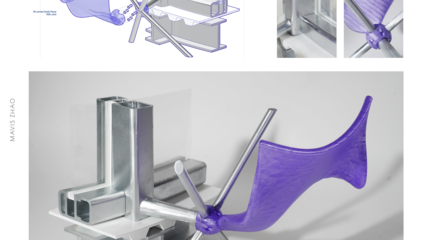
- Elevation
- Elevation
- Construction Diagram
- Printing Technology
- Wind Control Diagram
- Chunk Model